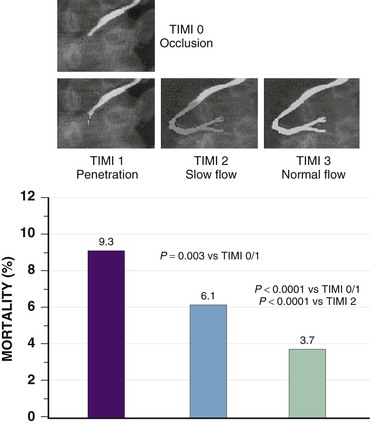

25).Īngiographic and clinical differences were observed between patients who present with initial ST-segment elevation and evolve early non-Q-wave versus Q-wave myocardial infarcts after treatment with rTPA, heparin, and aspirin. was higher in those with TIMI 0,1 compared to those with TIMI 2,3 flow (RR 6.30. One-year mortality was 3.4% versus 4.4% for non-Q-wave versus Q-wave infarct type, respectively (P =. Both dynamic and isometric exertion increase the relative risk of event. 43) were similar in patients assigned to the invasive or conservative postlytic management strategy, regardless of infarct type. Excellent epicardial blood flow, as assessed by use of either the TIMI flow grades (TFGs) 16 or the corrected TIMI frame count (CTFC), 7,8 and improved microvascular perfusion by use of the TIMI myocardial perfusion grade (TMPG) 9 have been related to reduced in-hospital and 30-day mortality after administration of thrombolytics. 76), and combined death or reinfarction (P =. Grade 3: complete perfusion (antegrade flow into the bed distal to the obstruction occurs as promptly as antegrade flow into the bed proximal to the obstruction, and clearance of contrast material from the involved bed is as. After 42 days, the occurrences of reinfarction (P =. TIMI flow grades:6 Grade 0: no perfusion (no antegrade flow beyond the point of occlusion). New congestive heart failure during hospitalization developed more frequently in Q-wave patients (18.9% versus 11.6% P <. 001) were greater in the non-Q-wave group.
#Exertion timi flow 3 trial
There are few data comparing clinical outcome and potential indications for routine post-myocardial infarction cardiac catheterization and revascularization of patients who sustain a non-Q-wave versus Q-wave infarct after thrombolytic therapy.Ī secondary analysis of 2634 patients enrolled in the TIMI II trial with a first myocardial infarction was performed to determine 6-week and 1-year cardiac event rates and identify clinical and angiographic differences between the 1867 patients (70.9%) who evolved a Q-wave infarct and the 767 patients (29.1%) who sustained a non-Q-wave infarct after treatment with intravenous thrombolytic therapy.


 0 kommentar(er)
0 kommentar(er)
